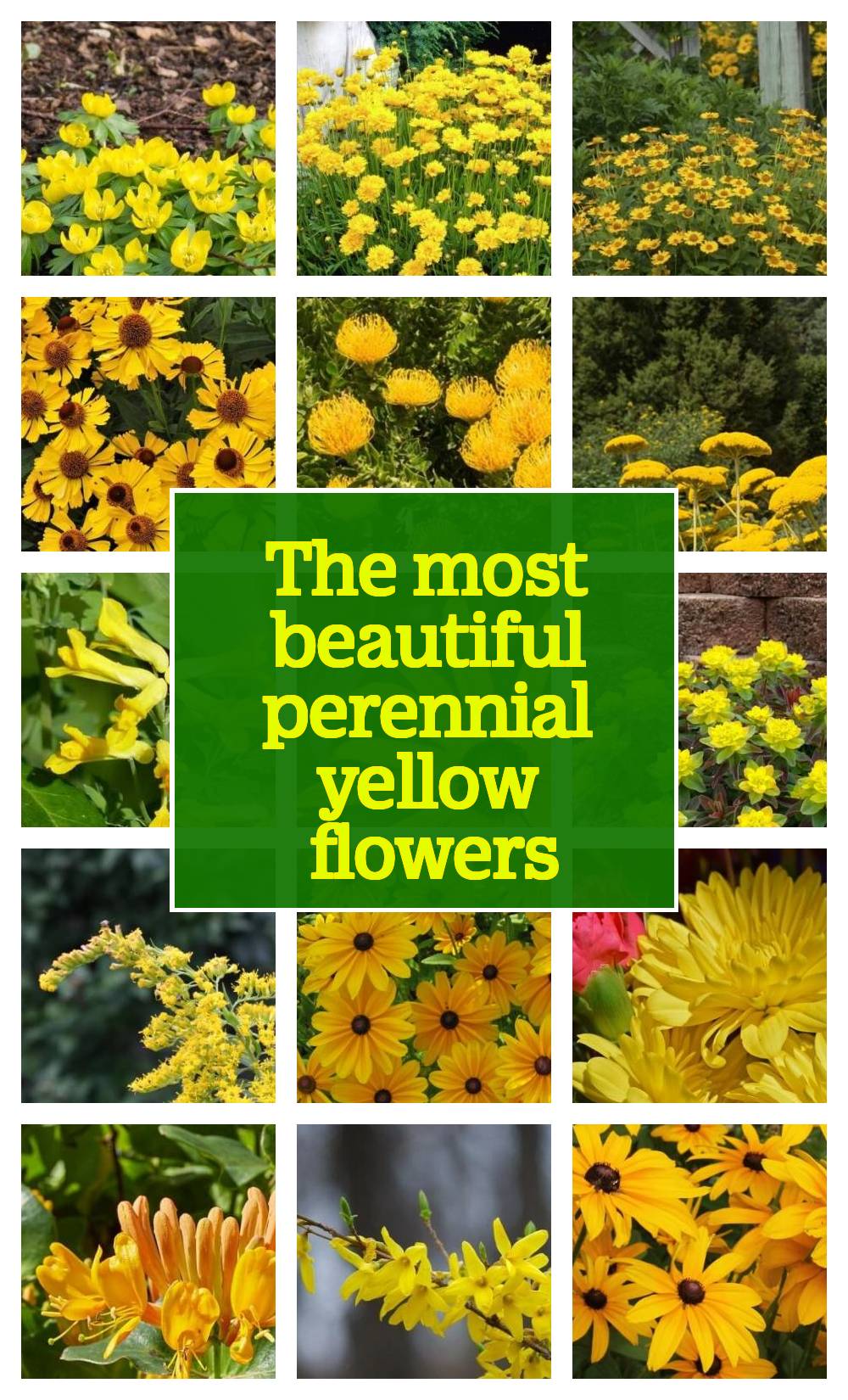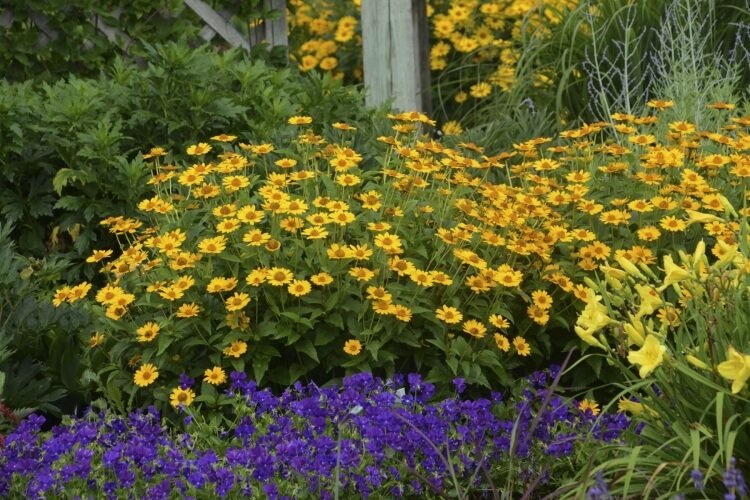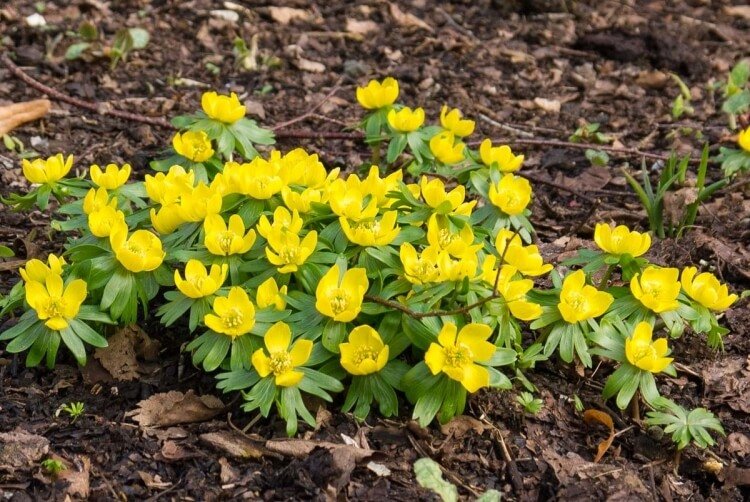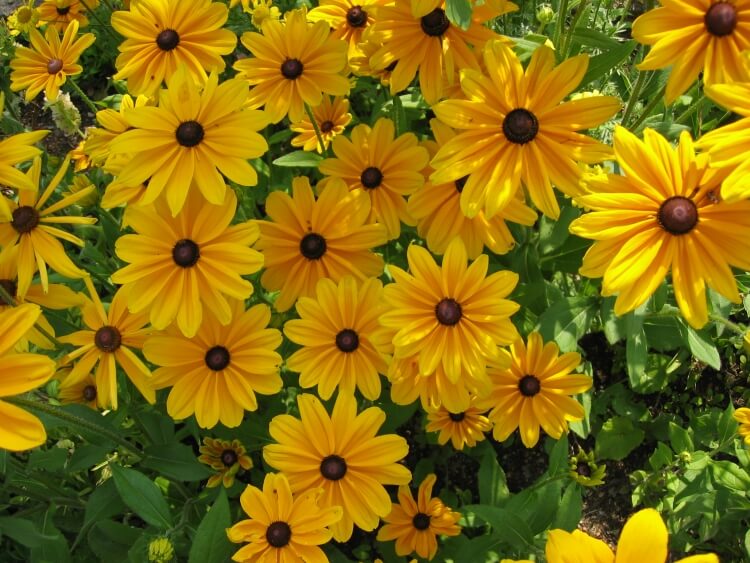The most beautiful perennial yellow flowers to add color to your garden
The sun in the garden is how you can describe the perennial yellow flowers in the flower bed in front of the house. While all the other colors blend into a rich tapestry, it’s the golden hue that really stands out. In spring, vibrant yellow offers a cheerful antidote to the dull winter tones. Then, they come to the summer blooms that accompany us until the fall. We present to you a list of pretty plants to brighten up your flower bed.
The golden tone creates a wonderful contrast with the garden greenery. Which perennial yellow plants to cultivate to beautify your exterior?
Perennial yellow plants are arguably some of the prettiest in the garden, and best of all, they don’t need to be planted periodically. Instead, once established, they will return from their roots year after year to decorate your yard with their vibrant color.
Choosing the perfect perennials begins with careful observation of your land. First, you need to see how the sun moves across the ground, which will let you know if you need UV-loving flowers or shade-loving flowers instead. Also, take into account the flowering periods of the plants you plan to grow. Not all species flower simultaneously, so choosing them carefully will allow you to enjoy an outdoors full of blooms throughout spring and summer until late fall. Finally, select perennials that complement each other instead of competing for space in your garden. So you can enjoy the lush decor.
Perennial yellow flowers that bloom in spring
These are plants you’ll look forward to checking out every year as they are part of the garden’s first burst of color.
Euphorbia
A member of the Euphorbiaceae family, spurge is a beautiful perennial plant with early spring flowering (April to June). This is the time of year when one can appreciate its bright yellow beauty. Quite hardy and drought-resistant, this plant does not fear afternoon shade in the garden and thrives in full sun. Easy to grow, euphorbias adapt to almost any garden soil.
Forsythia
Forsythia is a spring-flowering shrub. However, depending on the climatic conditions of the year, it usually flowers in April. Once the flowers have faded, be sure to prune the plant immediately as the next year’s flowers will develop on that year’s branches.
Throughout the summer, it’s just a beautiful green, leafy shrub. The forsythia likes sun or light shade exposure. It thrives well in rich soil.
Winter aconite or helleborine
It is a member of the buttercup family. The yellow flowers of these low-growing tuberous perennials are among the first to appear in spring. If you are planting the winter aconite, place it under larger perennials as ground cover. Plant the tubers in the fall, spacing them about six inches apart, and make sure to bury them at least six inches deep to protect them from winter conditions.
The plant likes full sun, partial shade and humidity, and is grown in clay soil, rich in humus, and well-drained.
Yellow pincushion
The pincushion can thrive only on the French Riviera, France, where summers are dry and hot, and winters are frost-free. However, the plant can be grown in a pot on a veranda. It flowers from March to May.
Outdoors, Leucospermum cordifolium grows well in full sun in acidic, well-drained soil low in nitrates and phosphates.
Yellow honeysuckle
Yellow honeysuckles have elliptical leaves that are greyish green below, while the flowers are a bright yellow hue, slightly fragrant, and turn red over time.
The plant needs light – full sun to partial shade. Watering should be rather moderate. The flowering period is from mid-spring to late spring.
Perennial yellow flowers that bloom in summer
Give your garden a magnificent spectacle of color all summer long by planting these perennial yellow flowers.
Yellow yarrow
Yellow yarrow is known for its clusters of small, flat-topped flowers and feathery leaves. They bloom in many colors, including yellow. Flowers are expected from June to early fall. The plant prefers full sun and dry, well-drained soil. It tolerates frost, is resistant to pests, and attracts butterflies, bees, and other beneficial insects to the garden.
Coreopsis
If you consider adding a bit of yellow to your flower beds, Coreopsis is a great perennial to consider. She is easy to grow and, therefore, perfect for novice gardeners. The plant flowers from May to October (depending on the species). She thrives in full sun or light shade and can be grown quickly from seed. In addition, Coreopsis is drought tolerant and must be topped to prolong flowering.
Attracting butterflies, this plant looks stunning in planters and rock gardens and is sure to enhance your landscaping.
Yellow echinacea
Although pink is the shade most commonly associated with coneflowers, there are some pretty yellow varieties. They like partial to full sun and aren’t afraid of drier conditions during the summer. In addition, they are a magnet for bees and butterflies.
Sun-yellow flowers with many petals surround a coppery cone. Plant blooming from mid to late summer, its golden color is perfect in beds and containers.
Summer daisy (Leucanthemum x superbum)
While it is usually the center of this plant that is yellow, there are also golden varieties. Beautiful lush foliage showcases them in the garden, and they bloom until the end of summer. Plant one, and it will spread quickly. Be sure to divide every two or three years. And don’t forget to remove the withered flowers!
The plant grows well in cool, well-drained soil and tolerates sunny or partial shade.
Yellow corydalis
Corydalis can grow in full sun or shade. They are perfect for rock gardens and sloping gardens. They are prolific plants that water themselves. They reach a height of 30 to 70 cm and flower for more than four months.
The perennial plant loves the sun and, in some cases, partial shade. Its preferred type of soil is light to drained.
Evening primrose
Yellow evening primrose is a great choice for your garden. They grow in full sun and sandy loam, well-drained soil. They bloom from July to October. The evening primrose reaches up to 15 to 25 cm, but in some cases, it can grow up to 1.5 m. The best way to propagate it is to divide it in the spring or fall.
Evening primrose flowers open in the late afternoon and usually close again around mid-morning the following day.
Yellow chamomile
Chamomiles have delicious daisy-like flowers. They are easy to grow perennial yellow plants that flower for 10 to 12 weeks. They prefer full sun to light shade and thrive in dry, stony, well-drained soil. You should regularly remove faded flowers for maximum flowering.
Russel’s Phlomis
A member of the Lamiaceae family, this perennial blooms from June to August. Reaching a height of 0.80 to 0.90 m, the plant is quite rustic, tolerates a sunny to half-shaded exposure, and a slightly acidic to slightly basic soil. Russel’s phoned is ideal for bedding, as well as a ground cover plant.
Solidago (Goldenrod)
From summer to autumn (June-October), the solidago illuminates the gardens with its beautiful golden yellow ears. Rustic and resistant, it likes full sun and partial shade. With a height of 0.30 to 0.90 m, the plant grows well in clayey, well-drained soil.
Perennial yellow flowers that bloom in autumn
These perennial plant choices will add vitality to the garden when other plants start to wither away.
Rudbeckia
A sunflower family member, the yellow daisy with a black heart, makes excellent cut flowers and blooms from July to September. She loves the sun, and pollinators love her.
Rudbeckia perennials are a great choice for well-drained soil that is dry but not too rich, and if you grow them in full sun, you will get the most yellow flowers. A good tip is to remove some of the flowers to stimulate flowering.
Chrysanthemum
Chrysanthemums are often found in fall garden centers, among hay bales and another harvest-themed decor. And when the garden fades, the yellow chrysanthemums stand out. They grow best in a location with full sun and especially like the morning rays to dry out dew and prevent mold.
These perennials bloom from June to late fall and can be pruned after flowering. They reach 40 to 100 cm high.
Autumn Helen
Fall helenias love full sun and partial shade and thrive in rich, somewhat draining, slightly acidic to slightly alkaline soil. They can reach 50 to 150 cm high and may require staking to protect them from strong winds.
It is advisable to remove faded flowers regularly to promote flowering and, in the fall, to cut the plant at ground level. Divide copies every 3 years to keep them healthy.





















